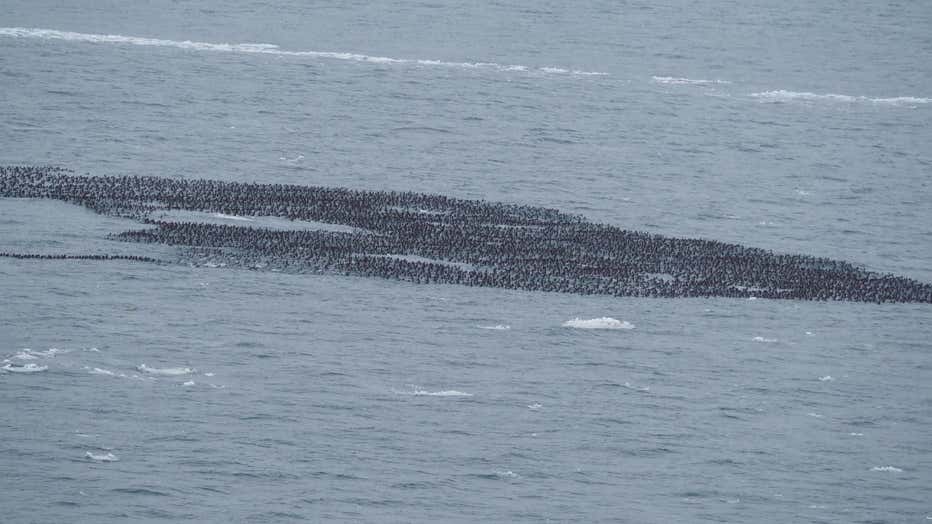Massive gathering of Redhead ducks, other birds spotted in Straits of Mackinac
Redhead ducks gather on the Mackinac Straits during the seasonal congregation of avian in the Great Lakes. (Photo credit: Steve Baker)
ST. IGNACE, Mich. (FOX 2) - Steve Baker couldn't rely on his eyes to take the photo - he was already leaning as far as he could over the railing on the Mackinac Bridge. He's also not a fan of heights.
So instead, the avid birder pointed the camera lens down, held his breath, and snapped a photo.
The photo was special because it captured the congregating Redhead ducks below from a unique vantage point: directly above. It was also special because it was only a fraction of the estimated tens of thousands of ducks and birds that are now floating in the Mackinac Straits.
Every year in the spring and fall, thousands of birds gather near the Mackinac Bridge, between Lakes Huron and Michigan, landing in the water that splits the state's Upper and Lower peninsulas.
Baker, who has been bird watching for decades and returns to the Mackinac Straits every year to conduct the Christmas Bird Count, said it's a rich tradition. Typically, "you hope for a rarity" when counting the birds, he says.
"You look for birds out of place, or out of the season - sometimes birds out from the west show up," he said. "Just unexpected birds."
This year came with its own rarity - though not for the kinds of birds that showed up. This time, it was because of the amount.
"Today I watched a steady flow of Redheads take flight from a huge raft and form a second massive flock a mile away," he wrote on the Straits Area Audubon Society Facebook page. "I'm struggling to even estimate numbers as well…"
In a typical Christmas Bird Count survey, Baker says they usually estimate about 6,000 to 7,000 birds gather - a little less than what they counted when they ventured out on Dec. 21. When they returned later this week, the group had more than tripled in size.
"I'll ponder over these photos but for now I'm just going to throw out 25,000 and I'm certain that's conservative," he wrote.
The Christmas Bird Count happens between Dec. 14 and Jan. 5 every year and is open to anyone, though it's not easy. How it works is someone selects a spot they want to count birds at, then they draw a circle around that area with a 7.5-mile radius. Any bird in that area can be counted. Those figures then get logged online, along with hundreds of other surveys that take place around North America.
It's done every year to assess "the health of the avian population," Baker said. It helps estimate if bird species populations are growing or falling, if they're shifting north as has been the trend recently, or staying put.

Some people report an oil slick having formed when the ducks gather in the winter. (Photo credit: Steve Baker)
It's an imperfect art-form since it requires a degree of guess work based on photos that are taken of a specific area. From there, birders count the number of birds and number of species spotted in a given area. This year recorded one of the highest-ever numbers of redhead ducks - about 7,000.
The ecological event in the Mackinac Straits also comes with bridge officials getting peppered with calls about an "oil slick" that's formed on the surface. Many are unconvinced after being told it's just a group of ducks that's tricking their eyes.
Based off the photos of the giant gatherings, who can blame them?

